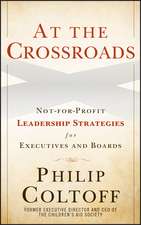Simple Habits for Complex Times: Powerful Practices for Leaders
Autor Jennifer Garvey Berger, Keith Johnstonen Limba Engleză Paperback – 29 feb 2016
Rather than offering one-size-fits-all tips and tricks drawn from the realm of business as usual, Simple Habits for Complex Times provides three integral practices that enable leaders to navigate the unknown. By taking multiple perspectives, asking different questions, and seeing more of their system, leaders can better understand themselves, their roles, and the world around them. They can become more nimble, respond with agility, and guide their organizations to thrive in an ever-shifting business landscape. The more leaders use these simple habits, the more they enhance their performance and solve increasingly common, sticky business issues with greater acumen.
Whether in large or small organizations, in government or the private sector, in the U.S. or overseas, leaders will turn to this book as a companion that helps them grow into the best version of themselves.
| Toate formatele și edițiile | Preț | Express |
|---|---|---|
| Paperback (1) | 153.11 lei 3-5 săpt. | +17.50 lei 5-11 zile |
| Stanford University Press – 29 feb 2016 | 153.11 lei 3-5 săpt. | +17.50 lei 5-11 zile |
| Hardback (1) | 265.56 lei 3-5 săpt. | |
| Stanford University Press – 24 feb 2015 | 265.56 lei 3-5 săpt. |
Preț: 153.11 lei
Nou
29.30€ • 30.67$ • 24.38£
Carte disponibilă
Livrare economică 10-24 martie
Livrare express 22-28 februarie pentru 27.49 lei
Specificații
ISBN-10: 0804799431
Pagini: 272
Dimensiuni: 152 x 229 x 23 mm
Greutate: 0.43 kg
Editura: Stanford University Press
Colecția Stanford Business Books
Recenzii
"This is the perfect guide to corporate transformation. Changing consumption patterns are turning business models upside down. Garvey Berger and Johnston show you how to drain the swamp of ambiguity, squarely face unexpected challenges, and seize new opportunities."—Eric Passmore, Chief Technology Officer, Online Publishing and Media, Microsoft Corporation
"Faced with dramatic change, leaders in all sectors must boldly think anew. As a woman from the global south, leading a large global non-government organization, I need new models and approaches to leading in this new world. Keith and Jennifer offer me stimulating and refreshing advice on how I can think and act differently to achieve enduring change."—Winnie Byanyima, Executive Director, Oxfam International
"Berger and Johnston offer a refreshing and bold take on meeting the challenges of leadership, fearlessly slaying sacred cows of previous theories to illuminate a model for the emerging future."—Erica Ariel Fox, New York Times bestselling author of Winning From Within
"This is mandatory reading if you want a shot at navigating complexity with grace. Jennifer and Keith render complexity visible, accessible, and workable. We all know about the pressures of uncertainty and the rapid pace of change, but 'the how' of being a leader has been unfathomable—until now. "—Gayle Karen K. Young, Chief Talent and Culture Officer, Wikimedia Foundation
"Simple Habits for ComplexTimesgives us a glimpse into the future—providing practical approaches not only to cope with complexity, but to learn and thrive in it. Practicing these simple, counterintuitive habits will enable leaders to grow past their limits. If you're serious about maximizing your leadership potential, this is a terrific book."—Larry Clark, Vice President of Talent Management and Development, Comcast Cable
Notă biografică
Descriere
Cuprins
This chapter introduces what the authors mean about complexity, volatility, ambiguity and uncertainty (VUCA) that seem to be growing in workplaces and families. The chapter begins to explore the three habits of mind that frame the development of the ideas through the other chapters. These habits for leaders are asking different questions, taking multiple perspectives, and seeing more of the system.
This chapter describes how leading in complex situations requires different approaches than leading in more knowable contexts based on the use of the Cynefin framework. The chapter points to the welter of demands on leaders to simplify to focus on what is most important, to measure progress, and report on performance. Unfortunately, methods to simplify and focus are effective when the situation is known or a right answer can be figured out, but in complex situations, there are too many interconnected variables to be able to predict what might happen and so quite different methods are needed to lead effectively. The chapter demonstrates leadership approaches needed in complexity, including setting a clear direction and boundaries for the organization or project and then conducting safe-to-fail experiments to learn the inclinations of the system and discover what works and what does not.
This chapter argues some of the most profound changes leaders can make to ways they lead are based on how they engage with people and how they change their thinking about this. Leaders are rewarded for being good problem solvers and thus coming to difficult conversations or running meetings, assuming that other people have problems or are problems that they need to solve. This chapter offer a new mindset of seeing others as people who make sense of the world differently and from whom the leader could learn useful insights and gain a bigger view of the situation. This sensemaker mindset radically changes how leaders lead. The chapter sets out a simple model for leaders to follow: giving clear data, separating out feelings and interpretation, and being genuinely curious and actively listening to the ways other people are making sense of things.
This chapter applies the insights of derived recent decades from behavioral economics about the mix of rationality and emotion that is at play in the ways humans perceive things and make decisions and how this shapes us as leaders. The authors identify common biases and mindsets leaders need to be aware of and how they might use this awareness to increase their effectiveness. Biases highlighted include thinking we are considering all the data, but seeing only data that supports what we already believe or have already decided; thinking we consider the future carefully, but being captured by the past (or superimposing the past on what we say the future will look like); and how thinking we see the world and our colleagues clearly, but really mostly judging by using our somewhat paranoid sense of the intentions we project on them.
Theories of effective communications assume crisp clear consistent messages repeated on many occasions and leaders actually discover crispness, clarity, and consistency are in short supply when the situation is complex. Leaders in complex situations need to have different sorts of conversations from the very beginning. The chapter describes a non-linear process of communication and the factors leaders need to pay attention to. These include setting the conditions for the initial direction and the initial boundaries, communicating a mindset about the direction and boundaries; Engaging emotions as well as logic and using stories and metaphors; attaching these ideas to things that have worked in the past; changing the messages as you learn, and listening well to enable feedback.
This chapter applies the ideas of adult development to how leaders might build organizations better equipped to work in conditions of volatility, uncertainty, complexity, and ambiguity. This depends on beginning with a mindset that people can grow and understand the world differently. From that basis, adult development theories can provide a growth framework for understanding how different adults may make sense of these challenges and how to change organizational practices to have work be a place where people are able to grow their capabilities. The chapter also provides examples of a number of organizational policies or values that are intended to do good things and also, perversely, may constrain people's development in the workplace. These include commitments such as hiring the smartest people, holding people accountable for results, using competition to sharpen people's performance, and always treating people the same.
This chapter presents a change model for leaders working in complex adaptive situations. The authors make the point that the ways leaders are required to be different during times of uncertainty and complexity are the same ways leaders can intentionally use to create a change in their organization (also a time of complexity and uncertainty). The core elements of this model are: Determining what's predictable and what's not, and leaning in to the unpredictable settings; creating a feedback rich organization to support constant learning; choosing direction and building guardrails; examine the present situation and looking for the current patterns of attraction; experimentingand learning; communicating clearly in uncertain times; and, all the while, developing a growth mindset in yourself and others.











